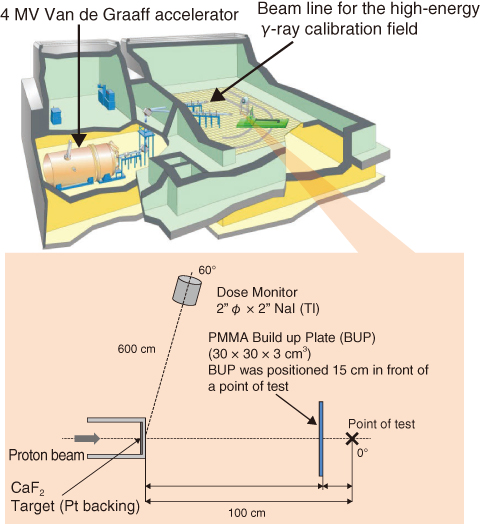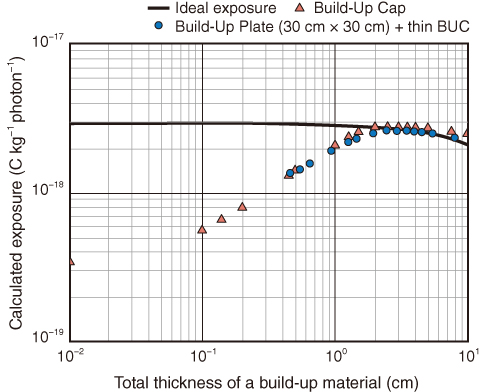
Fig.4-24 Schematic of the high-energy γ-ray calibration field (at Facility of Radiation Standards)

Fig.4-25 Exposures calculated at test point as a function of thickness and shape of build-up materials
The 6-7 MeV high energy γ-ray calibration field was established at the Facility of Radiation Standards and serves to ensure the reliability of readings for dosimeters used in high-energy γ-ray fields.
The reliability of dosimeter readings is ensured by the so-called “calibration,” which donates the periodic checks of whether dosimeter readings are correct. Well-defined radiation fields, called “calibration fields,” are required for proper calibration. The FRS has established various types of radiation calibration fields, including X-ray, γ-ray, β-ray and neutrons, which it offers to companies and institutes working in the field of radiation protection.
For exposure to γ-rays, fixed γ-ray calibration fields are only available up to 2 MeV, and dosimeters have been calibrated in these fields. In contrast, the emission of 6 MeV γ-rays resulting from the 16O(n, p)16N reaction in the coolant water is widely recognized as a substantial source of radiation exposure, which is particularly relevant for BWRs. Furthermore, for therapeutic and industrial purposes, γ-rays with energies greater than several tenths of MeVs are produced by electron accelerators and high-energy X-ray generators. The calibration field for 6-7 MeV γ-rays should tell us how widely available dosimeters respond to γ-rays with these energies or higher. However, no high-energy γ-ray calibration field is available in Japan for radiation protection. We thus developed a 6-7 MeV γ-ray field produced by the nuclear reaction 19F(p, αγ)16O using the 4 MV Van de Graaff accelerator at the FRS (Fig.4-24) for calibration purposes.
Because of the high energy of incident γ-rays, introducing an ionization chamber (IC) with a thicker build-up cap is required to precisely determine air kerma rates at a point of test (100 cm). This means that measurement conditions significantly differ from those of routine calibrations. We investigated the method of using a conventional IC coupled with the same build-up plate (BUP) introduced for routine calibrations. Throughout a series of Monte Carlo calculations, as shown in Fig.4-25, we assessed the measurement arrangement for the conventional IC and for the BUP, and found the optimal arrangement to be a BUP made of polymethylmethacrylate with the dimension of 30×30×3 cm3 and positioned 15 cm in front of a point of test. The method would allow us to properly calibrate the dosimeters that are most widely available.
In addition, introducing a cylindrical 2”φ × 2” NaI(Tl) scintillation detector as monitor allows us to quite precisely determine reference air kerma rates at a point of test when irradiating with γ-rays for regular calibrations.